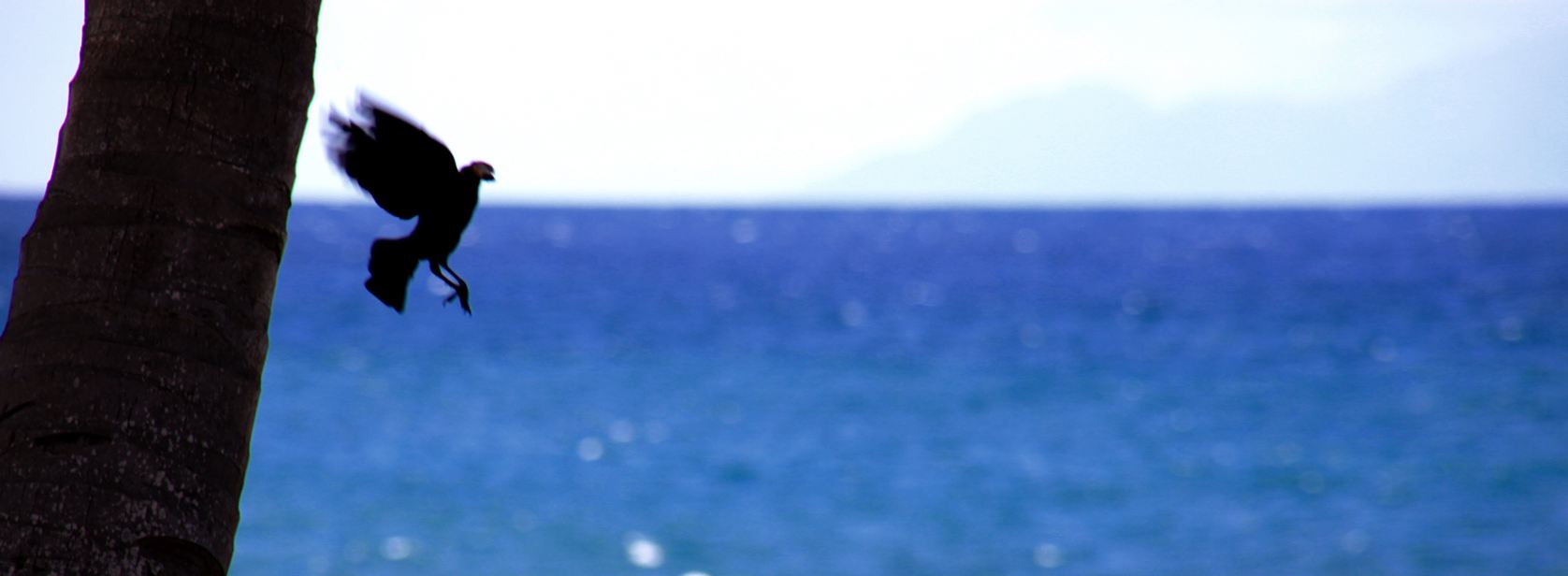Travelling that particular day was very different than any other time. It felt more like escaping Dante’s inferno unscathed, but with one million questions unanswered…
I spent almost 10 hours in the plane exhausted but awake, looking emptily at the back of the front seat, unable to read, watch a movie or even think clearly.
Relief came slowly. Under the sun and the constant singing of the birds, it seemed such a relief to be far from Europe… Bad news started slowly but steadily seeming somebody else’s business, and I decided we deserved this because we survived that.
About
Guadeloupe is a butterfly-shaped island made of two quite different parts: la Grand Terre and la Basse Terre. Both are sublime, although the Basse Terre more green and less touristy. Grand Terre is more arid and flat. Deshaies in Basse Terre was our base, and as I see it now a very good choice. If you like wild nature, Basse Terre is definitely more adapted for you. It features volcanoes, falls, rivers, and of course, exquisite beaches, as the rest of the island. What I sometimes regretted was poor service in their vicinity, and more generally, a bit everywhere. One struggles to grab a decent coffee, and in Guadeloupe you can’t just drop in a restaurant, have a seat and eat. You need to book, which in turn makes the experience a bit less spontaneous, more Northern European.
A delicious solution is eating at a canteen on wheels, if you find one near you. Bokit, the equivalent of a souvlaki, is the mainstream food offered and is worth trying. It is made in front of you with cornflower, while you get to choose the ingredients.
On the spot
You need a car in Guadeloupe. Driving is not a risky business, depending of course on how many planteurs one has had…
There are no particular health dangers (yet) in Guadeloupe. Only a few cases of zika. This being said, long gone are the times when malaria was the major mosquito borne disease. Nowadays there is dengue, chikungunya and zika. One needs to use protection (DEET 40% for adults), although quite frankly, I saw almost no mosquitoes anywhere in Guadeloupe.
Other dangers? Well. Don’t eat just any fish you may fish, and do not sit under any tree just because it offers shade, especially if it looks vaguely like an apple tree (mancenillers, extremely toxic). Do not walk barefoot in mud or stagnant water. There are no poisonous snakes, but there are vicious “scolopendres”, more widely known as mille-pattes. They can send you to the hospital, and the thing to do with them is get rid of any protective feeling you may get and squash them with your Crocs, instead of just pushing them away. Nature can survive that much!
As far as crime is concerned, Guadeloupe is not a dangerous place. It only felt a bit weird in Pointe-a-Pitre, the capital, near the Memorial Acte (the slavery museum).
A more real sweet danger though is rum, in all its forms. My preferred one: le planteur. You could think of it as a tamed version of rough rum, for strangers. I could have one anytime, actually I could have one right now…
Creole is widely spoken apart from French. I somehow had the false idea the two resemble a lot. In reality, if you have a good ear you may catch a few words of French, but that’s all. Even written, I had a hard time understanding anything at all, although it was fun trying to try and read traffic signs. The rules for that are simple. If you don’t understand what it means when you read it, read it out! Chances are you may understand it when you hear it. Another rule: - –r- often becomes –w-, final vowels are omitted.
Example: Sainte Rose becomes Sentwoz.
And now that you can read your way in Guadeloupe, it’s time for the pics!
The postcards
The slideshow
|

